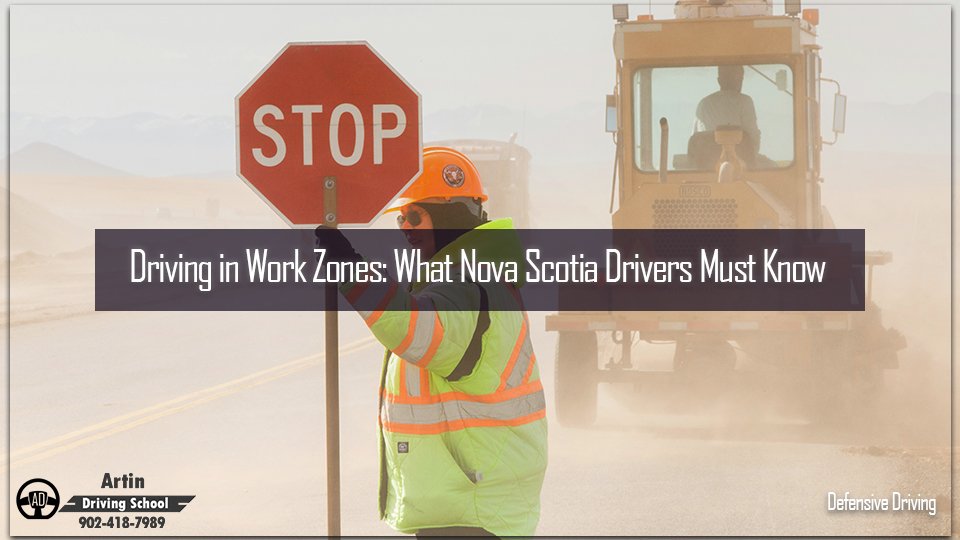Driving in Work Zones: What Nova Scotia Drivers Must Know
Work zones aren’t just road inconveniences, they are some of the most hazardous areas drivers face in Nova Scotia. Whether you’re traveling through downtown Halifax or on rural stretches of Highway 102, construction zones demand your full attention and defensive driving skills.
In these zones, road layouts change, signage is temporary, workers are exposed, and distractions can have deadly consequences. This post will guide you through how to stay safe, stay legal, and avoid common mistakes while driving in work zones across Nova Scotia.
Table of Contents
- Why Work Zones Are Risky
- What Makes Them So Dangerous
- Safe Driving Techniques
- Understanding the Law in Nova Scotia
- Tips for Daily Commuters
- Final Word: Drive Like Lives Depend on It
Why Work Zones Are Risky
Construction zones change the normal flow of traffic. Lanes are tighter, signs are temporary, and workers are often just feet from fast-moving vehicles. In Nova Scotia, many of these areas are on high-speed rural highways or through smaller towns with limited detours.
What’s more, most drivers don’t expect sudden changes in traffic patterns, which leads to last-minute braking, swerving, or even rear-end collisions.
What Makes Them So Dangerous
Here are a few key hazards found in Nova Scotia work zones:
- Sudden lane closures force drivers to merge abruptly.
- Narrowed lanes and barriers leave little room for error.
- Reduced visibility due to equipment, signs, or poor lighting.
- Unexpected stops as traffic backs up or workers cross the lane.
- Uneven surfaces that affect handling and control.
- Speeding drivers who fail to slow down appropriately.
It’s no wonder why accident rates spike in construction zones, especially during peak commuting hours or at night when visibility drops.
Safe Driving Techniques
This is where defensive driving really comes in. Applying a few solid habits can keep you, your passengers, and the workers safe.
1. Slow Down Early
Don’t wait until the last cone to hit the brakes. Begin slowing as soon as you see warning signs. Speedin fines are doubled in Nova Scotia work zones, and enforcement is active.
2. Increase Following Distance
Leave at least double the space between you and the vehicle ahead. In tight, changing conditions, reaction time is everything.
3. Watch for Flaggers and Equipment
Flaggers are your guide — treat their signals as law. Equipment like backhoes or dump trucks may move without warning, especially in low-visibility areas.
4. Avoid Distractions
Put your phone away. Lower your music. This is not the time for multitasking. Your attention should be 100% on the road and the surroundings.
5. Stay in Your Lane
Do not try to overtake or switch lanes in the middle of a zone unless directed. The margin for error is much smaller than on open road.
Understanding the Law in Nova Scotia
Nova Scotia has very specific laws about driving in construction zones. Here’s what you need to know:
- Speed limits are enforced strictly, and fines double when workers are present.
- Failing to obey flaggers can result in major fines or license suspension.
- Tailgating or aggressive driving near a work zone can result in reckless driving charges.
The safest option is to treat every construction zone like a school zone, with patience, caution, and full compliance.
Tips for Daily Commuters
Driving through roadwork becomes routine for many, especially in Halifax or Bedford where summer and fall are peak construction seasons. But complacency leads to risk. Here are a few commuter-specific tips:
- Leave earlier to avoid rushing through known construction areas.
- Use traffic apps to anticipate slowdowns and reroute.
- Mentally prepare for frustration so you don’t react aggressively on the road.
- Know the alternate routes around frequent work zones like Bayers Road or Highway 103 interchanges.
Final Word: Drive Like Lives Depend on It
Work zones are not just orange cones and caution tape — they’re active, often dangerous workspaces where a single misjudgment can change lives. Your responsibility as a driver is to stay alert, follow directions, and drive like someone’s life depends on your attention — because it does.
If you’re serious about improving your awareness and judgment behind the wheel, we highly recommend our Defensive Driving Course. It’s built for real Nova Scotia roads and real challenges — just like the ones you face every day.
Stay safe out there. Slow down. And remember, every cone, every sign, and every worker deserves your full respect.
The information provided on this post is for general informational purposes only and is not intended to serve as professional advice or guidance. While Artin Driving School strives to ensure the accuracy and timeliness of the information shared, Artin Driving School makes no guarantees, warranties, or representations regarding the completeness, reliability, or suitability of any content posted.






Thank you for another informative blog. Where else could I get that kind of info written in such a perfect way? I have a project that I’m just now working on, and I have been on the look out for such information.